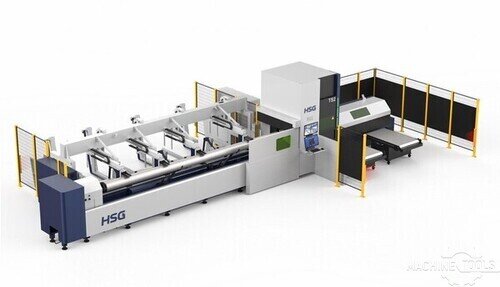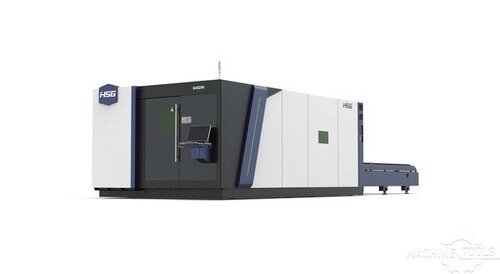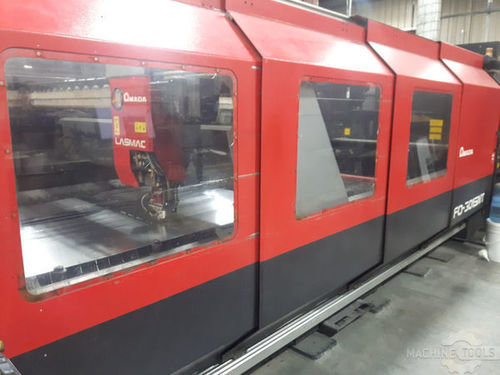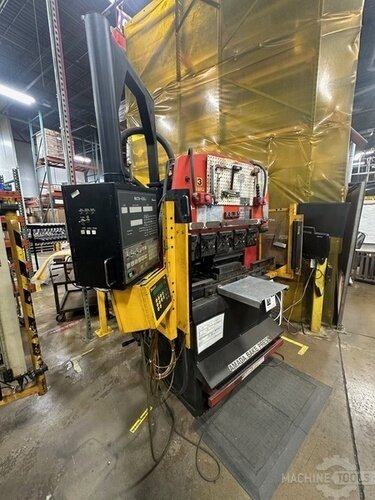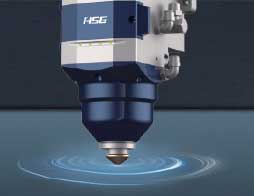As someone who’s spent years working alongside fabricators, I’ve seen how the right laser investment can transform a shop’s productivity—and how the wrong choice can tie up capital for years. At Mac-Tech, my job as a Regional Sales Executive is to help you cut through the marketing noise and align your equipment selection with real operational needs. Whether you’re running a high-mix job shop or scaling up for volume, I’m here to provide honest advice and personalized support so you can make decisions that drive long-term value.
Understanding Power Levels: What 12kW, 20kW, and 30kW Lasers Bring to the Table
Fiber laser cutting technology has evolved rapidly, with available power levels now stretching from 2kW all the way to 30kW and beyond. The jump from 12kW to 20kW or 30kW might seem like the obvious route for more throughput, but each increase comes with its own set of trade-offs. A 12kW Fibermak laser, for instance, offers exceptional speed and cut quality for a wide range of materials—especially mild steel, stainless, and aluminum up to 1” thick.
On the other hand, 20kW and 30kW systems are engineered for ultra-high-speed cutting of thick plate or for shops that require maximum productivity on heavy-gauge materials. With these higher power levels, you can pierce and cut thicker materials faster, but you’ll also see increased energy consumption and more stringent demands on your shop’s infrastructure and downstream equipment.
Aligning Laser Power with Your Fabrication Workflow: Key Questions to Ask
Before jumping to the highest available wattage, it’s essential to look closely at your typical production mix and workflow. Are your jobs dominated by thin-to-medium gauge materials, or do you frequently process heavy plate? How many shifts do you run, and what’s your target turnaround time? These questions help clarify whether a 12kW laser will meet your needs or if the extra horsepower of 20kW or 30kW is justified.
Another critical consideration is the balance between laser speed and downstream operations. If your press brakes, automation, or secondary processes can’t keep up with a high-power laser’s output, you may find your investment underutilized. I always recommend mapping out your entire fabrication process before deciding on laser power.
Real-World Cutting Scenarios: When 12kW Delivers Maximum Value
Many fabricators find that a 12kW Fibermak laser hits the “sweet spot” for their application mix. For example, if you’re cutting mild steel up to 1” or stainless up to ¾”, a 12kW system provides fast, high-quality cuts with lower operating costs than higher wattage machines. The majority of shops I visit run a mix of 10–20mm material, making 12kW the most cost-effective and versatile option.
Additionally, 12kW lasers are more forgiving on edge quality for thinner materials and typically require less post-processing. This efficiency translates to less scrap, less rework, and more predictable job costing—key factors for shops focused on profitability.
Scaling Up: When Does 20kW or 30kW Justify the Investment?
There are certainly cases where a 20kW or 30kW laser is the right tool for the job. If your business is shifting toward high-volume production of thick plate—say, 1.25” and above—or you’re competing for contracts that demand ultra-fast cycle times, the extra power can pay for itself in throughput gains. This is especially true in industries like heavy equipment, structural steel, or shipbuilding.
However, it’s important to remember that higher power lasers also bring higher purchase prices, increased energy use, and potentially greater maintenance demands. Unless your workload truly requires this level of performance, the ROI can be difficult to justify for many fabricators.
Press Brake and Tooling Synergy: Matching Laser Output to Downstream Equipment
One of the most overlooked aspects of laser selection is how it fits with your press brake and tooling capabilities. If your press brake can’t match the throughput of a high-power laser, you’ll end up with bottlenecks and idle time. Similarly, your tooling and automation systems must be robust enough to handle higher production rates without excessive wear or downtime.
A 12kW laser often aligns better with the overall flow of most fabrication shops, ensuring that cut parts move seamlessly to bending, welding, or finishing without overwhelming the next process. This synergy is crucial for maintaining a balanced, efficient operation.
Throughput vs. Operating Costs: Calculating True ROI in High-Power Lasers
It’s easy to focus on headline cutting speeds, but true profitability comes from understanding your total operating costs. Higher wattage lasers use more power, require more advanced cooling, and often need more expensive consumables. Over time, these factors can erode the cost savings from faster cycle times—especially if your production doesn’t fully leverage the added capacity.
I work closely with customers to run the numbers: What’s the break-even point for a 12kW vs. a 20kW? How much material do you need to process each month to justify the upgrade? In many cases, a 12kW laser delivers the best balance of speed, efficiency, and low overhead for all but the most demanding applications.
Material Mix and Thickness: Optimizing Power for Diverse Production Needs
The diversity of your material mix should drive your laser selection. If 80% of your work is ¼” to ¾” stainless or mild steel, a 12kW laser will handle those jobs with ease and efficiency. If you’re regularly processing thick aluminum or exotic alloys, or if you see a shift toward heavier gauges in your quoting pipeline, then a higher power system may make sense.
It’s also worth noting that higher power lasers can sometimes compromise cut quality on thinner materials due to increased heat input. With a 12kW laser, you can dial in settings for optimal edge quality across a broader range of gauges, keeping your shop flexible and competitive.
Maintenance and Reliability: Balancing Service Demands with Production Goals
A key advantage of 12kW systems is their proven reliability and lower maintenance profile compared to ultra-high-power lasers. With fewer demands on optics, cooling, and beam delivery systems, you’ll see less downtime and more predictable service intervals. This reliability is critical for shops with tight delivery deadlines.
Higher power lasers, while impressive in performance, can be more sensitive to alignment and require more frequent preventive maintenance. If your team isn’t prepared for the increased service needs, you risk unplanned downtime that can offset the gains in speed.
HSG TS2 HIGH SPEED TUBE FIBER LASER CUTTING MACHINE
HSG 3015H 12KW
Case Studies: Success Stories from Relationship-Driven Fabricators
I’ve worked with many fabricators who initially thought they needed the biggest, fastest laser available—only to realize that a 12kW Fibermak delivered everything they needed at a fraction of the cost. One Midwest job shop, for example, boosted their throughput by 30% simply by upgrading from an older 6kW to a new 12kW, without overwhelming their press brake team or increasing scrap rates.
Another customer in the HVAC sector found that the 12kW laser’s flexibility allowed them to handle a wider variety of materials and thicknesses, winning new business without overextending their budget. In both cases, the key to success was a careful analysis of real-world needs—not just chasing the highest wattage.
Building a Future-Proof Fabrication Shop: Strategic Equipment Selection
The smartest shops don’t just buy for today—they plan for tomorrow. Selecting a 12kW laser leaves you room to grow, especially if you’re considering automation, additional shifts, or new product lines. It also frees up capital for investments in press brakes, robotics, or software that can give you a competitive edge.
I always recommend thinking about your five-year plan: Where do you want your shop to be, and how can your equipment investments support that vision? Sometimes, the best answer isn’t the biggest machine—it’s the one that fits your workflow and supports your growth.
The Personal Touch: How On-Site Consultations Drive Smarter Purchasing Decisions
No two shops are alike, which is why I believe in on-site consultations before recommending any equipment upgrade. By walking your floor, reviewing your parts, and talking with your team, I can help you pinpoint the laser power—and the press brake and tooling solutions—that will maximize your ROI.
This relationship-driven approach means you get a solution tailored to your actual needs, not just a sales pitch. Our goal at Mac-Tech is to be your long-term partner, helping you navigate changing market demands with confidence.
Conclusion: Making the Informed Choice for Cost-Effective Laser Investment
Choosing between a 12kW, 20kW, or 30kW Fibermak laser isn’t just about chasing raw power—it’s about finding the right fit for your shop’s workflow, material mix, and growth strategy. For many fabricators, a 12kW system offers the best blend of speed, quality, and cost-effectiveness, especially when paired with well-matched press brakes and tooling.
If you’re ready to take a closer look at your options, let’s connect for a no-obligation consultation. Together, we’ll find the solution that keeps your shop competitive, efficient, and ready for the future.
Frequently Asked Questions
Is a 20kW or 30kW laser always faster than a 12kW?
Not always—while higher power can increase speed on thick plate, most shops don’t see a significant throughput gain on thin or medium materials.
Will a 12kW laser cut thick materials?
Yes, a 12kW laser can cut mild steel up to 1” and stainless up to ¾” with excellent quality and speed.
Are operating costs higher for 20kW and 30kW lasers?
Yes, energy consumption, cooling requirements, and consumable costs all increase with power level.
How do I know if my press brake can keep up with a high-power laser?
Analyze your current bending throughput and see if it matches the projected output of your laser; bottlenecks are common if not properly matched.
What is the typical ROI for a 12kW laser?
Most shops see ROI within 2–3 years, especially when replacing older equipment or increasing shift work.
Can I future-proof my shop with a 12kW laser?
Absolutely—a 12kW system is versatile and supports growth, especially when paired with automation or additional shifts.
How does Mac-Tech support customers after installation?
We provide comprehensive training, remote and on-site service, and ongoing consultative support for all equipment.
Get Weekly Mac-Tech News & Updates

